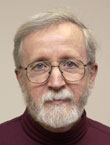 The Penn College Board of Directors on Thursday was presented with design plans for the facility to be constructed at the former BiLo property on West Fourth Street. The board also approved "faculty emeritus" status for a longtime professor of history.
The Penn College Board of Directors on Thursday was presented with design plans for the facility to be constructed at the former BiLo property on West Fourth Street. The board also approved "faculty emeritus" status for a longtime professor of history.
The board viewed a model and sketches of the design for the Center for Business and Workforce Development, a one-story structure that will be the new home for Workforce Development and Continuing Education, the Penn State Center for Continuing & Distance Education at Penn College, and the Industrial Modernization Center. Currently, those facilities are housed at the Business and Technology Resource Center on Reach Road.
Benedict Dubbs of Murray Associates Architects presented an overview of the design to the board. The building, which will be approximately 31,800 square feet and include 125 parking spaces, will also house laboratories and faculty offices for the college's electronics program. There will be a main entrance on West Fourth Street for WDCE, the Penn State Center for Continuing & Distance Education at Penn College, and the IMC. The south side of the building, which will include eight electronics labs and faculty offices, will have an entrance facing the main campus, facilitating access for students.
Dubbs said the building materials will be similar in many ways to those used in the construction of the Student and Administrative Services Center and the Roger and Peggy Madigan Library, currently being built at the main entrance to the college.
The primary masonry materials are of a gray hue similar to those used at the SASC. The tinted glass and aluminum trim for windows and doors will look much like those used both at the SASC and the new library. One difference would be the limited use of a dark, rigid Swedish-manufactured material known as Trespa, which is made of recycled wood chips and is highly resistant to abuse, Dubbs said.
Gilmour said the electronics faculty provided valuable input for the design and "have been incredible to work with."
Veronica M. Muzic, vice president for academic affairs and provost, said the new instructional space will give the electronics program "a shot in the arm" because of its functionality and high-tech appearance.
Overall, Gilmour said the facility will "take our presence to Fourth Street" and help connect the main campus to off-campus student residences. "We are very excited about this building," she said.
If zoning and land-development-plan approvals are received, the project could proceed on a schedule calling for construction contracts to be brought before the board for approval in April.
 In other business, the board approved "faculty emeritus" status for Daniel J. Doyle, a professor of history who retired from his full-time position in August. Except for a stint in 1985-88, when he served as director of Integrated Studies, Doyle taught full time at the college and its predecessor, Williamsport Area Community College, from 1967 until his retirement in August. Doyle is currently working on a project to compile an oral history of the college.
In other business, the board approved "faculty emeritus" status for Daniel J. Doyle, a professor of history who retired from his full-time position in August. Except for a stint in 1985-88, when he served as director of Integrated Studies, Doyle taught full time at the college and its predecessor, Williamsport Area Community College, from 1967 until his retirement in August. Doyle is currently working on a project to compile an oral history of the college.
The board heard from its new auditing firm, Larson Kellett & Associates PC of Montoursville, and Robert M. Fisher, vice president for business affairs, that the college has received an unqualified "clean" audit opinion for the fiscal year ending June 30, 2005.
In addition, Frederick W. Becker, dean of hospitality, provided board members with an overview of operations in the School of Hospitality.
The board bid farewell to Raymond T. Coward, who participated in his last board meeting. Coward, the dean of Penn State's College of Health and Human Development, has been appointed provost and vice president at Utah State University, effective Jan. 2.
"It has been a privilege for me to serve," Coward told Board Chairman Robert E. Dunham.